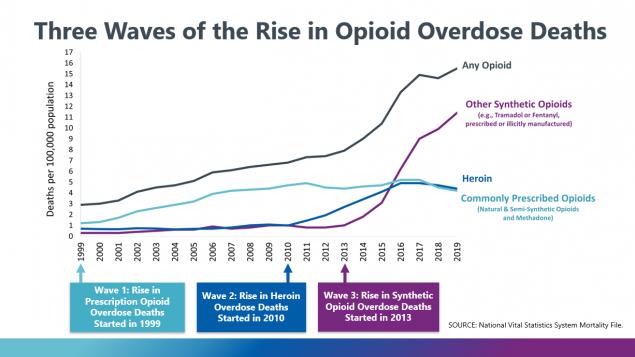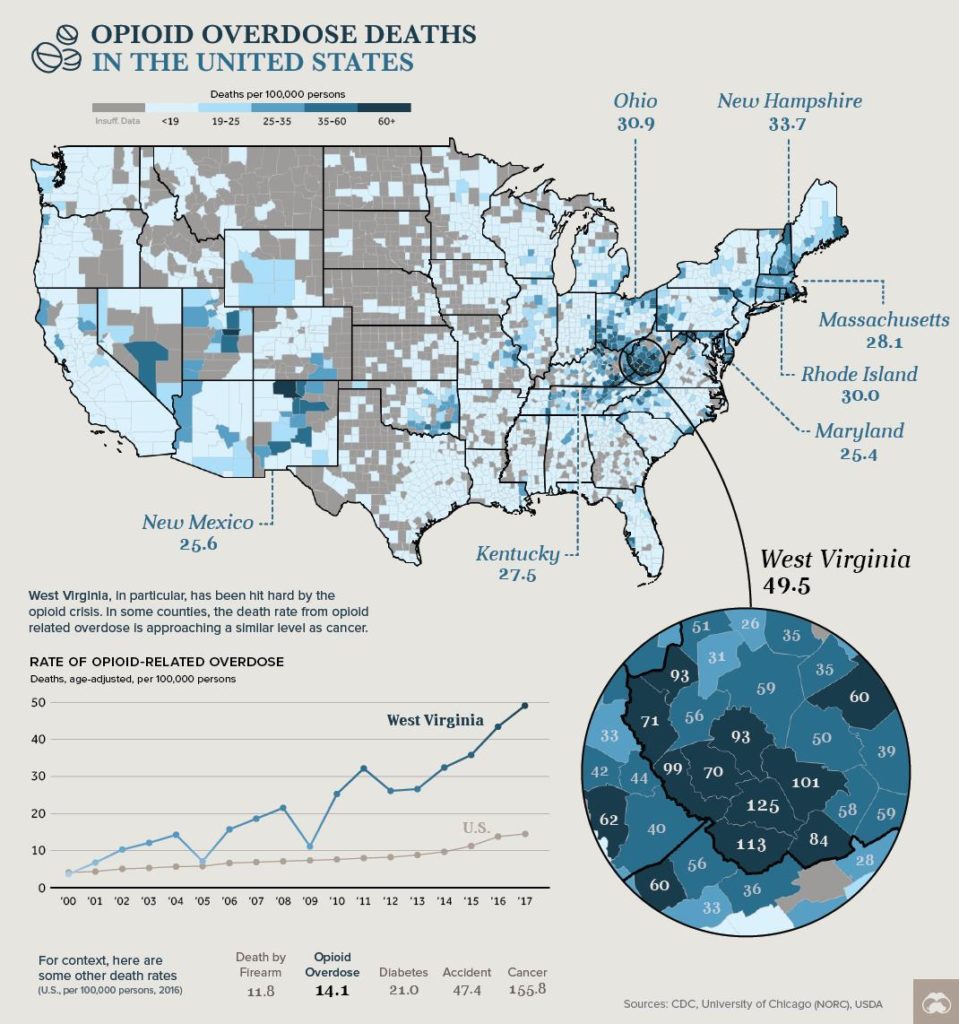How does the US fare when it comes to the opioid crisis? We look at the situation in the US and to compare it to statistics in Europe.
How Did the Opioid Crisis Start?
In the late 1990s, there was a drastic increase in opioid prescriptions, with assurance from pharmaceutical companies that the drugs were not addictive. Since then, opioid addiction and opioid-related deaths have significantly increased. By 2017, the Opioid Crisis was declared a public health emergency.
Opioid Crisis in the US:
From 1999 to 2019, there have been three large waves of opioid-related deaths due to both prescription and illicit drug use. The CDC outlines these three significant waves:

What Do We Know About the Opioid Crisis in the US?
- Approximately 8-12% of people who are prescribed opioids who are suffering from chronic pain end up developing opioid use disorder.
- Approximately 4-6% of people prescribed opioids transition to heroin.
- Approximately 21-29% of people prescribed opioids end up misusing or overusing the prescribed drugs.
- Approximately 80% percent of people who use heroin once misused opioid prescriptions.
- There have been more than a million deaths related to opioids since 1999. Also, two-thirds of overdose deaths in 2018 were opioid-related.
- The opioid crisis is directly attributed to the overprescribing and intensive marketing from pharmaceutical companies of opioid analgesics.
- According to one study, approximately 18% of adults in America with opioid use disorder are uninsured, which makes them more at risk of overdosing and reduces the likelihood of recovery.
- The economic burden of opioid misuse equates to $78.5 billion a year.
- As opioid use increases in the US, many linked conditions relating to opioid misuse are also described, including behavioral issues and domestic violence, neonatal abstinence syndrome, HIV, and hepatitis C.
This diagram posted by The Economist demonstrates the number of deaths related to opioids according to the county. As seen below, counties such as West Virginia have been hit exceptionally hard, with a 14.1% death rate per 100,000 persons:

Opioid-Related Deaths in Europe:
- In Europe, dramatic differences in opioid-related deaths and addiction rates can be seen. Although there are cases in Europe of opioid-related overdose, they cannot be compared to the crisis occurring in the US.
- Within Europe, approximately 9,000 people were lost in 2016 due to opioid overdose. In comparison with the US, there were over 42,000. This highlights the severity of the opioid crisis in the US.
Opioid-Related Deaths in Canada:
- Opioid-related deaths are far lower in Canada compared to the US. However, opioid-related deaths are on the rise in Canada, with a staggering 95% increase in the death rate attributed to the COVID pandemic.
- Factors that contribute to the worsening of overdose statistics during the pandemic include; increased feelings of isolation, anxiety, depression, and changes in availability or accessibility to drug supply
Opioid-Related Deaths in Australia:
- In 2016, there were approximately 105 deaths. This is very small compared to the US.
Why Are There Such Significant Differences?
Firstly, some areas, such as some eastern European countries, have limited access to opioid medications. This results in a lack of access and reduced prescription rates.
Additionally, opioid use is seen as being ‘more controlled’ in Europe, Canada, and Australia versus the US. Doctors do not overprescribe as often compared to the US. Moreover, pharmaceutical companies do not have as much lobbying power in Europe, Canada, and Australia. Also, the starting point for opioid prescriptions included the US. This was before the addictive nature of the drug was known. Therefore, this has led to an environment of overprescribing and dependency.
Summary:
Overall, the Opioid crisis in the US is complex compared. This can be attributed to several factors, including overprescription, pharmaceutical companies’ lobbying, excessive advertising and ease of access to opioids.
